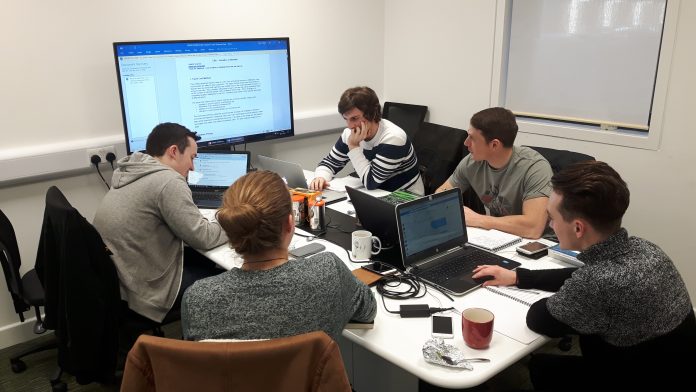2018 promises to be an exciting and challenging year for universities and the Higher Education sector. Among the many less than positive news, there are also successful practices that make our universities stand out in the way in which they support their students’ experience, widen access and participation, and support their mental health and wellbeing. The ‘Sticky Campus’ at Abertay University is one such example. As Robertson explains and describes, the concept is simple and yet complex in its operationalisation.
Abertay is a small, modern university in Dundee, Scotland, with around 3700 students. Our defined purpose is “to offer transformational opportunities to everyone who has the ability to benefit from Abertay’s approach to university education” and we wish to “inspire and enable our students, staff and graduates to achieve their full potential” (strategic plan 2015-20). Since 2013, we have transformed our approach to teaching and learning, through whole institutional curriculum, radically altering assessment and feedback practices (Abertay is one of only two universities in the UK to have fully implemented the Grade Point Average system (GPA) for degree classifications), piloting new technologies to enhance student learning coupled with investing in the necessary staff development to realise our strategic goals. This has led to significant rises in student satisfaction across all scales (for assessment and feedback we achieved the second highest NSS scores for a Scottish University in 2017) and a rise in the number of students leaving with good degrees. But we still face challenges around retention and graduate-level employment.
Why do these challenges persist for us? An important aspect of our provision is widening access and social mobility and around 35% of our students are partner college entrants who go directly into years two and three of our programmes. Other important factors about our core student demographics are that many are first generation into higher education, they have very busy lives, most undertake some kind of regular paid employment to help finance their studies, and many commute daily to university. For all of these reasons, we have increasingly found that students are becoming more strategic in their learning and are only coming onto campus if they perceive real value and necessity. This is obviously a rather risky approach, especially for learners who might be more vulnerable and in need of additional support.
Since last year we have begun the next phase of our strategy implementation piloting new learning spaces and learning technologies as well as enhancing our IT infrastructure. In essence we are now striving to create a “sticky campus”. The philosophy of the “sticky campus” originated in Australasia and is a very simple concept; it aims to provide the students with the right kind of environment and learning opportunities that they will want to come and stay. Academic literature (e.g. Tinto[1]) provides evidence to suggest that students who have a strong sense of belonging and connectedness with their peers and staff, who feel supported and a part of their university’s learning communities are more likely to complete their studies, reach their potential and be successful in their chosen career. The sticky campus is therefore key for an institution like Abertay which has a diverse student body, relatively small class sizes and whose majority of students come to university to improve their life chances. Achieving the sticky campus is not trivial, however.
In response to these challenges, we have begun a new phase of investment in our estate, IT infrastructure and academic development. We are experimenting with new technology-rich learning spaces which provide useful “sand boxes” for staff and students. There is a perceptible shift away from traditional didactic pedagogies to innovative, more interactive approaches which focus on collaboration, problem-solving and investigation. These sand boxes extend to our new science labs and, most notably, our new library which now provides a range of informal and formal learning spaces for individuals or groups. Forgotten your laptop today? No problem we have provided laptop vending machines. Need a coffee or some cake to get you through your studies or just want to chill out for a while? We have a new café, vending machines and soft seating areas. There is also increased charging facilities and enhanced wifi throughout the building. Finally, you have a group assignment and need to work on a project with your peers? Book online a dedicated group study room equipped with state of the art collaborative technology.
Finally, we recognise that students may not always be proactive in seeking support for a whole range of reasons. Abertay is one of an increasing number of universities in the UK to harness sophisticated, data-led approaches to improving the student experience through systematic collection, analysis and integration of data sources, e.g. student record system, interaction with the VLE, assessment grades etc. to help identify students at risk. In conjunction with such “learning analytics”, universities are able to target student support interventions to those students in the greatest need. At Abertay we believe that the most effective method of support even in this digital age is still often face to face.
[1] See, for example, Tinto, V. (1975) “Dropout from Higher Education: A Theoretical Synthesis of Recent Research” Review of Educational Research vol.45, pp.89-125.








